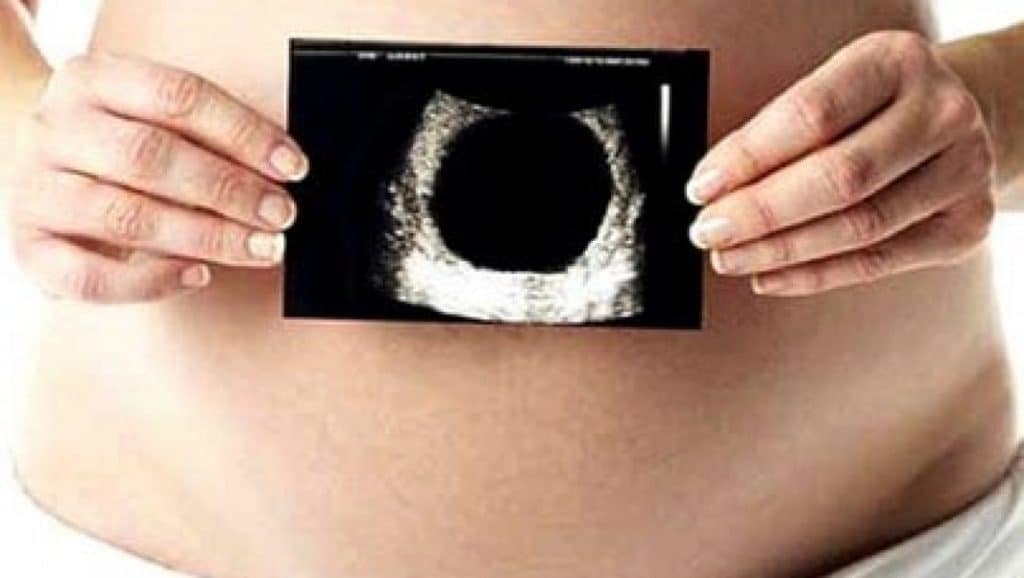
What is a Blighted Ovum?
The blighted ovum or an anembryonic pregnancy that is resulted when the pregnancy in the early stages is affected post conception. In other words, the fertilized egg that is implanted in the uterus begins to develop a placenta but unfortunately doesn’t develop as an embryo.
Otherwise, in normal pregnancies, the sperm fertilizes an egg after ovulation and within hours, it starts to divide and form into an embryo. And, with the implantation, the placenta starts to develop, as well as, there is a rise in the levels of hormones such as hCG. The embryo continues to grow and can be specked in the ultrasound by around week 5 to 6 of the trimester.
If a blighted ovum occurs in the pregnancy, the practitioners can detect it in the ultrasound starting at around week 7. The ovum in the ultrasound will be seen as smaller than normal or rather, an empty gestational sac with no embryo.
But, what causes this type of miscarriage? What are its symptoms? If you have questions likewise, continue reading the article below:
What Causes a Blighted Ovum in The Pregnancy?
The causes for most early miscarriages are known to be due to chromosomal abnormalities, as per the researchers, more than two-thirds of pregnant women experience blighted ovum miscarriages due to genetic abnormalities. This means, the fertilized egg had an extra or perhaps had a missing chromosome that resulted in an imbalanced mix of genetics for the egg to continue developing.
Ultimately, the ovum blighted is the biological end of a pregnancy with nothing you or your partner could do to prevent it in the first place.
What are The Symptoms of an Ovum Blighted Compared to a Normal Fertilized Egg?
Surprisingly, the blighted ovum feels nothing different in comparison to a normal pregnancy. This is because the body senses implantation into the uterus and therefore, it continues to produce hormones like the hCG, causing early pregnancy symptoms. This is also the reason why women with an anembryonic pregnancy, just like many women with normal pregnancies, test positive, experiencing symptoms such as morning sickness, sore breasts, and bloating.
However, with the fertilized egg failing to develop into an embryo, the levels of hCG pregnancy hormones begin to fade away with the disappearance of symptoms of pregnancy. The women might as well experience certain signs of miscarriage, like spotting or bleeding, abdominal cramping, etc.
For a better understanding, here are a few things that occur or are the symptoms of blighted ovum:
- Heavy spotting or bleeding: Light bleeding and spotting are considered normal in early pregnancy. However, you should see your health care practitioner in case of heavier bleeding that is similar to the monthly cycles.
- Severe cramps: Irrespective of cramping during pregnancy being normal, make sure to get them checked by a specialist if accompanied by symptoms like bleeding or fever as they could be signs of a pregnancy complication, such as ectopic that requires medical attention.
- An abnormal ultrasound: This is when the health care provider happens to notice a smaller gestational pregnancy sac indicating the absence of an embryo.
- Lower hCG hormone levels: If the blood test shows lower levels of the pregnancy hormone hCG at about six to eight weeks of pregnancy, it could be a sign of an anembryonic pregnancy.
Note– The blighted ovum can only be reviewed via ultrasound as it reveals if the fertilized egg has developed into an embryo or vice versa. It also helps the practitioner to know and confirm if the symptoms are caused due to an ectopic pregnancy, or by the implantation of a fertilized egg outside of the uterus, that is, in the fallopian tube.
On the other hand, ectopic pregnancies also cause similar signs as anembryonic pregnancies but are required to prompt medical treatment as they could become life-threatening due to internal bleeding.
Also, if you are unaware or fail to remember the first day of your last period and the doctor fails to spot an embryo at an ultrasound, you would be asked for a revisit in a week for a follow-up ultrasound.
Is Blighted Ovum Common?
As per the medical information, a blighted ovum is the most common cause of miscarriage, with an account of 50 percent of women experiencing a miscarriage in their first trimester, and 15 percent of all pregnancies that end in miscarriage before 13 weeks of pregnancy.
Therefore, also make note that amongst kinds of miscarriages, the blighted ovum miscarriages are experienced very early, so not all cases are diagnosed making it difficult to have an accurate number based on this condition.
How to Treat a Blighted Ovum?
If the doctor happens to diagnose blighted ovum, the following treatment can be taken into consideration:
- Expectant management: If and when the body recognizes that the embryo isn’t developing, it will expel the contents in the uterus through a heavy flow, similar to a heavy period. Here, the doctors often recommend waiting a few days to a week initially to see if the body naturally passes the anembryonic pregnancy out.
- Medication: If the implanted embryo’s hormones cause the uterus to sustain the pregnancy, the practitioners may prescribe medication to help spurs the uterus and clear the contents.
- Surgery: The doctor could also perform a brief surgery, that is the dilation and curettage (D and C), to empty the uterus.
Does a Blighted Ovum Affect Future Pregnancies?
Not at all. We understand how hard it can be for any pregnancy loss, but it does not mean there is no second chance for a healthy pregnancy and baby. Many women face miscarriage early in pregnancy but go on to have a healthy babies in the future.
However, 1 percent of pregnant women end up facing a repeat miscarriage, but the good side is that there are treatments that do not affect the odds of conceiving later. And, if there is a case of a repeated blighted ovum, the doctor would recommend testing for an understanding of the root cause that is affecting it, such as a hormonal imbalance or genetic condition.
To Conclude
A blighted ovum is a type of miscarriage that sadly can be experienced even after getting a positive pregnancy test. However, this doesn’t necessarily mean that there are no ways for you to become the parents of a healthy baby shortly. If you face any signs such as heavy bleeding, you must immediately visit the doctor and the doctor may prescribe medicines and instructions that work best as per the need.
At Parenthood bliss, we understand the cause and effect of the condition on parents, therefore, we could also recommend not losing hope and trying again for the best.
FAQs on Blighted Ovum
1) How long can you carry a blighted ovum?
2) What could cause a blighted ovum?
3) How do you know if you have a blighted ovum?
Sources:
Reviewed By:

Esha Chainani - Obstetrician and Gynaecologist
Dr. Esha Chainani is an Obstetrician, Gynaecologist, and laparoscopic surgeon who aims to break the stigma around women’s health by advocating an inclusive and open practice of obstetrics and gynecology and an author of several internationally published research papers and health articles in the media like the Swaddle.
She also founded Premaa, a non-profit to reduce maternal morbidity and eventual maternal mortality by providing lower-income pregnant women living in urban areas with cell phone access through an app that can feature an entire section about contraception as well for a whole gamut of reproductive health.
A panel for multiple health sessions including with the UN, USAID, BMC, gender at work, and multiple non-profit organisations, and is on the advisory panel of the South Indian medical students association.





